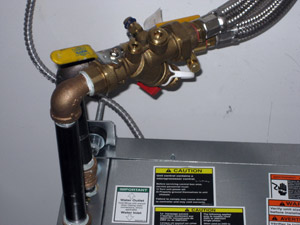PETM, or the Paleocene-Eocene Thermal Maximum, has been on my mind lately since Vermont is still recovering from the impacts of Hurricane Irene. While the direct impact of the storm was on relatively small numbers of people in a world of 7 billion humans, we in Vermont have a tight knit community. We feel each other’s pain.
For me, part of the flood’s impact was seeing what happened to our buildings. It is very clear that because we are not acting fast enough to reduce greenhouse gas emissions, we will increasingly need to adapt to a rapidly changing climate — including adapting our built structures. Which brings me back to PETM.
 The Earth has been here before
The Earth has been here before
National Geographic recently ran an article, Hothouse Earth about the Paleocene-Eocene Thermal Maximum (PETM), a period 56 million years ago when atmospheric CO2 levels were at 1,500 PPM. “The PETM lasted more than 150,000 years, until the excess carbon was reabsorbed. It brought on drought, floods, insect plagues, and a few extinctions…. But there were no humans around 56 million years ago…”
The good news for me is that some forms of life on the planet survived and even flourished under those conditions. Since I often wake at night worried the human species may annihilate life on our planet, this has eased my stress, a little. Yet the rise in CO2 concentrations that lead to the PETM occurred over thousands of years — and now we are driving toward a rate of change that is likely to be about 10 times faster by releasing carbon sequestered beneath the earth during the Cretaceous period within just a few hundred years.
In the PETM
One noteworthy feature of the PETM was a sea level 220 feet above the current level. Another important aspect was the cycle between drought and extreme rain events. If we think the flooding we’ve seen this year — in Vermont alone we saw Lake Champlain set a record high and remain above flood stage for months in the spring after extensive flooding due to a late season heavy snowfall, plus exceptional flooding from Irene in the fall — it is likely to get worse.
Part of the solution?
Buildings in which we live and work must be redeveloped to survive extreme weather events while eliminating their contribution to climate change. Building energy resiliency means creating buildings that can operate when the grid is down and that contribute to the local environment by protecting the watershed, providing safe refuge during extreme weather and creating joy over the life of the building.
We can transform our built environment to offer the protection and benefits of passive survivability — but we need to change our current building practices quickly.



